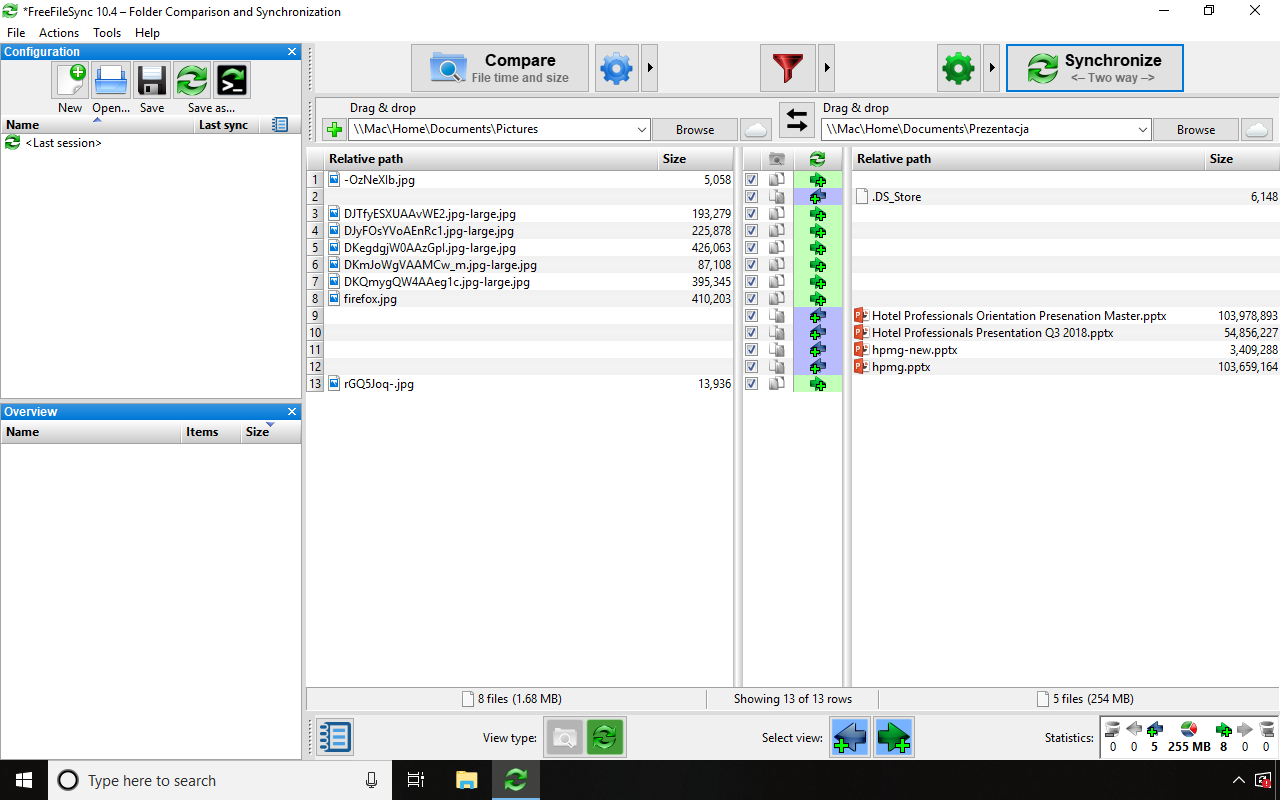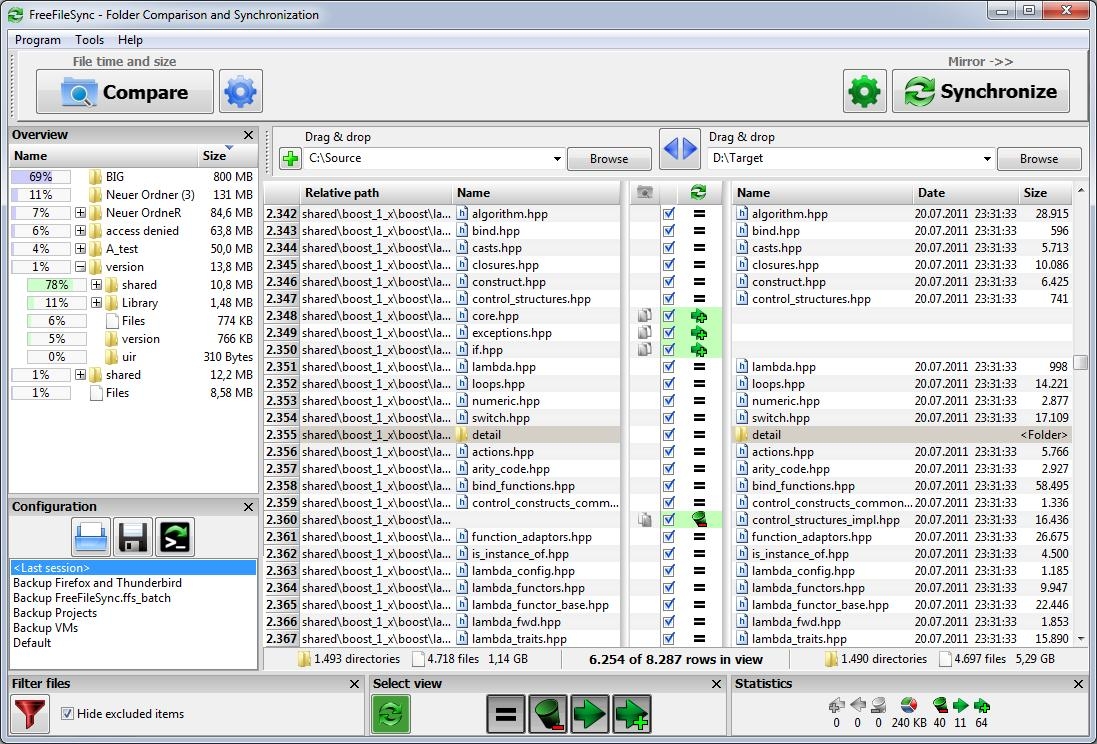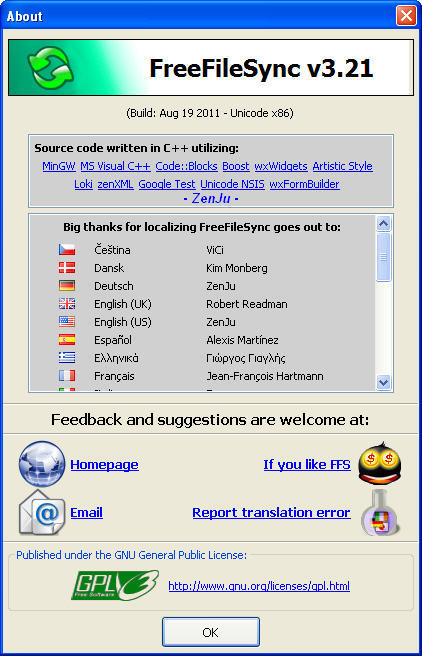
- #FREEFILESYNC HOW TO#
- #FREEFILESYNC UPDATE#
- #FREEFILESYNC SOFTWARE#
- #FREEFILESYNC FREE#
- #FREEFILESYNC MAC#
#FREEFILESYNC MAC#
You can also run the batch file at a specific time schedule by using Windows Task Scheduler or Mac Automator. Step 3: Drag the batch file and drop on the RealTimeSync application, you will observe the details of the profile/tasks will appears on the interface. Step 2: After saved, the batch file logo will appear as figure above. Click on the “Save as Batch Job” (Black Coding) icon which is the 5 th logo located at the top-left corner. Step 1: In order to preform the Schedule Synchronization, the profile/task should saved as a batch file first. Step 3: After the synchronization, all the files will be recovered from the cloud to the local folder.įreeFileSync provide a schedule synchronization feature by using RealTimeSync application. Click “Synchronize” and proceed as you backup. Step 2: After swapping, you can observe the Cloud Folder has swap to left panel and the Local Disk Folder at right panel. Click on “Swap” logo (Two Way Arrow) at the middle of two panel. For this example, the local disk folder (Left Side Panel) has lost some files and required to recover from the cloud (Right Side Panel). Step 1: To preform recovery, you can select back the original profile/task. Step 7: The saved profile/tasks will appear at the left panel with specific profile name. Step 6: Save the file at a location in order to use it in future. Step 5: To save the profile/task, click on the “Save” (Green Recycle) icon which is the 4 th logo located at top-left corner. Step 4: After the synchronization process is completed, all files that used to be backup should categorize in equal sign. You can make it run at background and perform your daily tasks as usual. The upload speed is mainly depending on your upload speed from your internet. The backup process will take time-based on the total file size to be upload to the cloud. Step 3: A statistic graph will show you the synchronization process.
#FREEFILESYNC UPDATE#

Step 6: After comparing, the file directory from both source and destination folder are establishes. Step 5: After complete the configuration, you can observe both column’s path are already set up. Step 4: You can select on sub-folder at FTP by browsing the “Directory on Server”. Make sure to tick on Explicit SSL/TLS option.

For local backup, simply preform the similar method as stated before to locate the path.Īt the “Access Online Storage” interface, select on FTP for cloud, enter your FTP credentials. Step 3: For the other column, select on the “Google Drive/ Cloud” Logo at the side of browse if you are intending to backup your file to cloud. Step 2: Select the folder you want to locate as source for backup, click “OK”. It is used to locate the source folder path. Click on “Browse” at one side of the column. To start, we need to locate the source and destination folder. Step 1: There mainly run by two separated columns which indicates the source and destination folder.
#FREEFILESYNC HOW TO#
The Complete Guide for FreeFileSync will assist you on how to perform a backup and set up a scheduled synchronization process to specific folder. įreeFileSync comes with 2 softwares which FreeFileSync is used to preform backup, while RealTimeSync is used to preform scheduled synchronization process

#FREEFILESYNC FREE#
It is completely free and compatible to Windows, Linux and other OS platforms.
#FREEFILESYNC SOFTWARE#
FreeFileSync Syncing/Backup Complete Guideįor the users who subscribe to our Cloud Storage Services, here is a tutorial on how to use the software for backup/syncing.įreeFileSync is a handy FTP/Cloud Syncing and Backup Software.


 0 kommentar(er)
0 kommentar(er)
